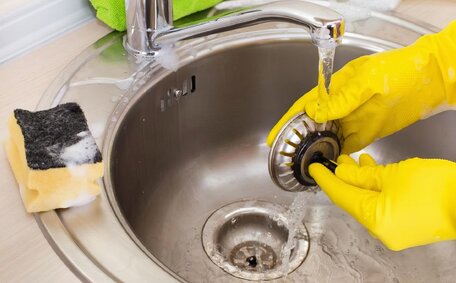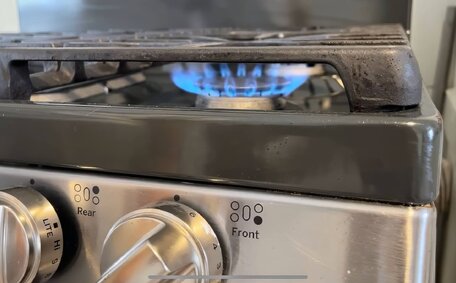Introduction to Gas Pipeline Lifespan
Understanding the expected lifespan of gas pipelines is crucial for maintaining safe and reliable natural gas delivery. As pipelines age, degradation can occur, suggesting that vigilant inspection, maintenance, and an understanding of when a pipeline would necessitate replacement are essential. This article explores the key factors impacting gas pipeline longevity and what’s being done to ensure their integrity as the energy landscape evolves.
We’ll examine the average lifespans of transmission and distribution pipelines, how variables like pipe materials and environmental conditions accelerate deterioration, and the maintenance strategies utilities employ to prevent failures.
The role of gas infrastructure is also shifting amid the growth of renewable power - while pipelines will remain vital in the medium term, their use may decline decades down the road.
By illuminating both the technical and practical aspects of pipeline lifespan, this guide provides useful insights for industry, regulators and consumers alike. Understanding best practises helps ensure community safety and energy reliability while the energy transition unfolds.
Average Lifespan of a Gas Pipeline
Gas pipelines are typically engineered to last approximately 50 years under normal operating conditions. This assumed lifespan drives utility maintenance schedules and long-term capacity planning.
However, many factors affect the actual longevity of natural gas pipelines. Transmission pipes tend to endure for decades, while distribution networks may require replacement more frequently.
Pipeline lifespan vastly depends on the material used in manufacturing. Plastic pipes last around 100 years, but older iron pipelines degrade after just 50-60 years before needing renewal. Environmental conditions also accelerate decline - pipes buried underground or underwater deteriorate faster.
Regular maintenance helps preserve integrity. Utilities use inspection devices to monitor pipe wall thickness and replace sections as necessary. However, there comes a point when a full refurbishment of the pipeline would be required to guarantee safe ongoing service.
The 50-year benchmark for lifespan is therefore a general rule of thumb. With comprehensive asset management programmes, gas pipelines can be sustained for longer periods before renewal is mandated.
Factors Affecting Gas Pipeline Lifespan
Many complex factors determine the functional lifespan of gas pipelines before degradation necessitates renewal.
Environmental conditions play a major role. Pipelines buried underground face constant assault from soil, water and chemicals that accelerate corrosion and fatigue cracks over time. Even small levels of soil movement can bend pipes. Thermal expansion and contraction also strains materials.
The manufacturing quality and strength of pipeline materials are also pivotal longevity factors. Welding imperfections and weaknesses in old cast iron pipes spur earlier failure. Modern plastic pipes endure better thanks to advanced polymer technology.
High-pressure operation represents another ageing factor where the pipeline would be constantly stressed. Constant axial stresses and fatigue pressures make steel pipes more susceptible to cracking or ruptures. Utilities carefully regulate pipeline pressures to balance delivery capacity against integrity risks.
External damage factors like nearby construction work and natural disasters take a toll too. Even minor scrapes and dents to pipe walls from excavators can become crack starting points.
Together, these environmental, operational and structural variables interact, determining how a pipeline would degrade from the inside out. Utilities combat these with corrosion-inhibiting coatings, cathodic protection, pressure regulation and sophisticated inspection to prolong asset lifespan. But at some point, pipelines must still be replaced.
Signs a Gas Pipeline Needs Replacing
There are several clear indicators that a gas pipeline may be approaching the end of its working life and require full replacement:
- Frequent leaks - If pipelines develop repeated small leaks or pinhole leaks, this signals the pipe wall is degrading and replacement is imminent.
- Visible rust or corrosion - Steel pipelines with extensive rust flakes or holes need replacing to prevent hazardous gas escapes.
- Dents, gouges or bends - External damage that crimps or dents the pipe walls accelerates wear and necessitates replacement.
- Drops in pressure - If gas pressure drops regularly without explanation, cracks or ruptures may be present.
- Location near older infrastructure - Old cast iron gas pipes laid alongside other legacy utility assets typically degrade faster due to corrosion.
- Changes in ground conditions - Any shifts in surrounding soil structure puts extra strain on pipelines, shortening lifespan.
By proactively identifying these warning signs of ageing pipelines, gas utility workers can schedule targeted renewal projects before major failures occur. This ensures the ongoing safe and reliable delivery of natural gas across communities.
Safety Issues with Aging Gas Pipelines
As gas pipelines advance in age, significant safety risks emerge if utilities neglect comprehensive inspection and maintenance regimes. Old pipes that are not proactively renewed pose preventable hazards to communities and the environment.
The largest safety threat comes from gas leaks and potential explosions. As pipe walls corrode over decades, small cracks and perforations can release raw gas - creating explosion dangers if ignited. In older urban areas, leaks near buildings are especially hazardous.
Old cast iron and early steel mains from over 50 years ago are prone to fractures or joint failures too - risking major gas escapes. These legacy pipelines were built to lower specifications before modern safety codes.
Beyond catastrophic ruptures, ageing pipelines also suffer small chronic leaks that continue undetected for long periods. As well as the insidious risk of ignition, these leaks discharge natural gas - a potent greenhouse gas - contributing to climate change.
Environmental hazards also arise from gas pipe failures underneath waterways or wetlands. Construction techniques like directional drilling sometimes damage pipeline coatings or protective wrappings during installation - allowing quicker corrosion from water or chemicals.
Through regular maintenance and strategic replacement programmes, utilities strive to mitigate the safety risks of ageing gas network assets across suburbs and towns. But without proper funding and oversight, communities can be left vulnerable to ageing pipeline failures.
When to Call a Professional About Gas Pipelines
Homeowners should contact qualified gas professionals promptly if they discover any concerning signs of pipeline degradation. Gas leaks pose serious risks and must be addressed by licenced technicians.
The experienced team at Pennant Hills Plumbing are available 24/7 for emergency callouts on 1300 349 338. Alternatively, email [email protected] to book an on-site inspection preemptively.
Technicians can thoroughly assess pipe conditions using specialised equipment. Age becomes less indicative if pipelines are well-maintained, so a detailed report determines either proactive replacement or ongoing monitoring.
All gas pipe installation and repairs mandate fully licenced plumbers by law. Attempting hazardous DIY fixes using YouTube tutorials proves extremely dangerous and illegal. Our technicians complete rigorous, accredited training to ensure workmanship adheres to the latest safety codes.
For the wellbeing of yourself and the community, trust qualified gas professionals whenever intervention is required. Preventative maintenance avoids disasters down the track. Pennant Hills Plumbing has proudly serviced Sydney for over a decade – contact us today with any pipeline concerns.
Replacing Versus Abandoning Aging Pipelines
When gas pipelines near the end of usable life, utility managers must decide whether to replace or permanently abandon them. Both options involve careful procedures to avoid safety issues or environmental impacts.
Full replacement provides reliable ongoing service but incurs major costs. Abandoned lines are sealed and left buried or extracted altogether. However, soil collapse and accelerated corrosion risks remain long-term if pipes are simply abandoned underground.
Replacement strategies attempt to balance how well the pipeline would perform, safety standards and minimised community disruption. New polyethylene or steel pipes are joined alongside the old, before carefully transferring service across. The expired line gets filled with inert solid material for stability.
Abandoning a pipeline permanently requires completely purging gas contents so no explosive hazards linger. Technicians then insert plugs at pipe endpoints before injecting sealing foam. But retired infrastructure still risks leakage and contamination without removal.
Environmental factors encourage pipeline extraction where feasible after abandonment. But removal incurs substantial community impacts from extensive excavation, noise and traffic delays. Costs also escalate rapidly compared to standard abandonment procedures.
Only qualified professionals can safely manage pipeline replacement or abandonment. Pennant Hills Plumbing has executed complex gas infrastructure projects for over a decade. Contact our team on 1300 349 338 or at [email protected] to discuss renewal solutions suiting your assets.
The Impact of Renewable Energy on Gas Pipelines
The growth of renewable energy is transforming landscapes worldwide - with profound implications for natural gas pipelines too. As nations rapidly expand wind, solar and other zero-emissions generation, gas infrastructure demands and lifespan projections now face uncertainty.
Investments into new gas pipelines and associated assets looked lucrative only years ago under traditional policy settings. But with carbon pricing expanding and environmental scrutiny escalating, regulatory assumptions and usage forecasts are shifting fast.
Ultimately renewables will dominate electricity production through zero-fuel costs and public sentiment. Gas electricity generation already dropped over 20% in the past decade. This further erodes the viability of long-lived pipeline assets designed for high utilisation when built.
Renewable energy adoption likewise fosters a shift where sectors like buildings and industry would ponder how pipeline electrification could be integrated gradually. Gas has historically met over 40% of national energy demand across homes, commerce and manufacturing. But efficiency incentives and electric heat pumps now challenge gas appliances.
Consequently, pipeline operators observe with concern how pipeline would handle declining utilisation and throughput levels. Lower flows corrode pipes faster while fixed costs stay high - spurring calls for earlier abandonment. However, considering if a pipeline would be suitable for refurbishing to transport renewable gases like hydrogen or biomethane may sustain some assets.
In essence, renewables fundamentally disrupt traditional assumptions underpinning pipeline lifespan and economics. Their meteoric growth forces utilities to re-evaluate investment payback periods and strategic management of these large-scale legacy assets.
Regulations for Gas Pipeline Decommissioning
Strict regulations govern gas pipeline decommissioning and abandonment to ensure community safety and environmental protection. Pipeline owners must follow comprehensive procedures for purging, sealing and removing retired assets.
Under national energy laws, owners retain legal responsibility for pipelines even after closure. Companies must demonstrate with evidence thatpipelines no longer carry risks after abandonment. Safety comes before cost savings whendecommissioning ageing infrastructure.
Specific requirements depend on pipeline size and location. Transmission pipes undergoing complex removal may take over a year with extensive planning and documentation. Environmental protections also apply for pipelines crossing habitats or waterways.
Within New South Wales, gas asset owners must submit closure plans to the Department of Planning and Environment. Decommissioning applications detail how demolition waste will be sustainably disposed while avoiding pollution or land contamination.
For local distribution pipes at residential sites, Sydney Water and council approval ensures appropriate restoration around properties. Grass, plants and fences get reinstated after footpath excavations.
Pennant Hills Plumbing stays well-versed with the latest regional and state codes for gas pipe closure. Our project managers collaborate with clients and authorities to retire infrastructure safely and responsibly. Contact us on 1300 349 338 or at [email protected] to discuss decommissioning requirements.






